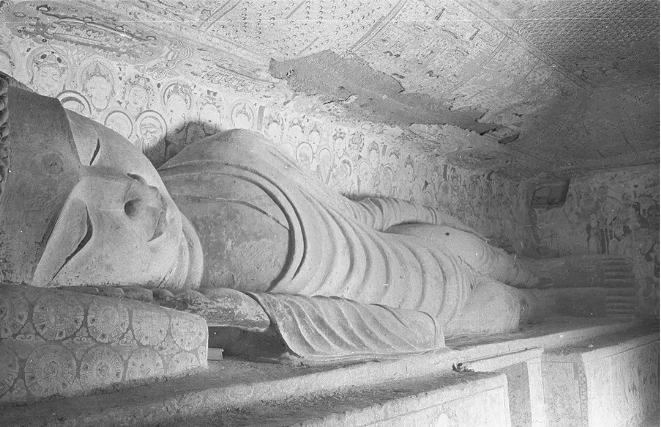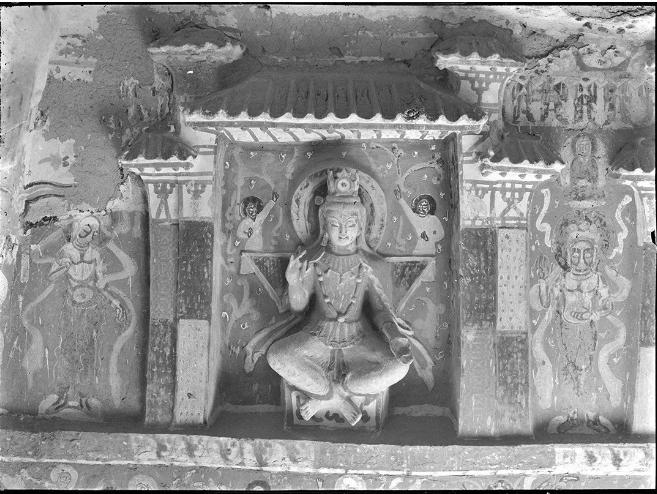
Photos provided to People's Daily
Visualizing Dunhuang: The Lo Archive Photographs of the Mogao and Yulin Caves, a stunning nine-volume book series featuring photos from the incredible Buddhist caves at Dunhuang in Northwestern China, was officially launched in China on Thursday.
The books present for the first time in print the comprehensive photographic archive created in the 1940s by James C. M. Lo (1902–1987) and his wife, Lucy L. Lo (b. 1920) of the remarkable Buddhist caves at Dunhuang, featuring more than 3,000 of the original black-and-white photographs that provide an indispensable historical record.
The books are published by the Princeton University Press in association with the P.Y. and Kinmay W. Tang Center for East Asian Art at Princeton University.
The compilation of Visualizing Dunhuang lasted for 13 years. The exceptional set has brought together the efforts of many Chinese and foreign academic institutions, including Princeton University in the US and the Dunhuang Academy in China, as well as more than 10 leading scholars on Dunhuang studies and East Asian studies around the world.

Zhao Shengliang, secretary of the Party committee and former director of the Dunhuang Academy, was invited to Princeton University in 2010 and spent more than half a year on campus sorting through the Lo Archives, so that the content of each photo, locations of the caves, and production dates of the murals could be identified, ensuring a professional and authoritative interpretation of the photos.
Invaluable for their documentary worth and artistic quality, and thorough in their coverage and clarity, the Lo Archive images represent a rare perspective on significant monuments, many now irretrievably changed.
Exquisitely produced and with a limited printing of only 1,000 sets, this monumental Visualizing Dunhuang set's abundant photographs have been lavishly printed as tritones, allowing for the closest possible match to James Lo's original black-and-white photographs, and for the clearest, richest images possible. With numerous silk-screened pages and an eight-page double-sided gatefold, Visualizing Dunhuang stands as a definitive reference for scholars, collectors, and libraries in art history and Asian studies.
Visualizing Dunhuang comprises nine volumes. It begins with a reference volume and ends with a volume of essays. The introductory volume includes an essay about the formation and history of the Lo Archive, as well as maps, diagrams, photographs of the Mogao site, and concordances. The central volumes contain photographs of the Mogao and Yulin Caves, collaged photographs, several hundred newly created diagrammatic plans, and English and Chinese captions. The final volume demonstrates through ten essays the types of methodologies and the range of topics the Mogao and Yulin Caves can generate. The three sections, “Dunhuang as Historical Archive,”“Dunhuang as Site: Architecture and Setting,” and“Dunhuang as Art and Art History,”are grounded, respectively, in historical materials, the physical setting of the caves, and the art at Dunhuang and its academic study.

